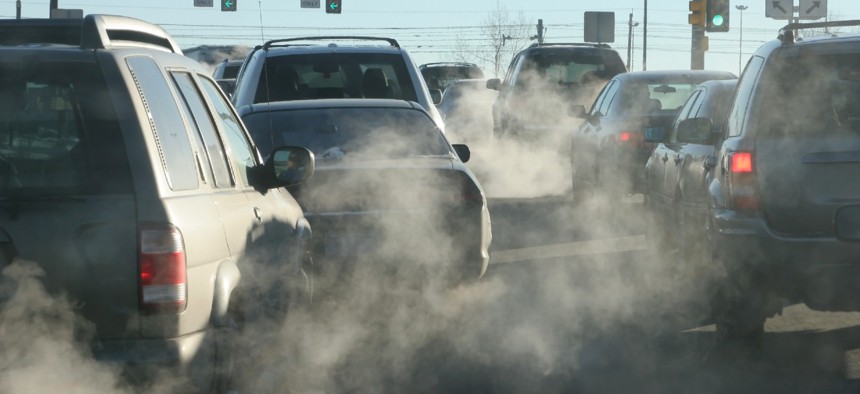
In addition to allowing continuity of operations by helping feds work during severe weather, telework can reduce the government's carbon footprint by reducing commutes. milehightraveler / iStock.com
OPM’s Telework Initiatives Dovetail with Climate Change Planning
The agency announced a program to connect leaders from the private and nonprofit sectors with federal agencies to address climate change.
The Office of Personnel Management says that its efforts to harness workplace flexibilities like telework and remote work over the course of the COVID-19 pandemic will also help agencies adapt to climate change.
OPM on Thursday published its plan for “climate adaptation and resilience,” as mandated by President Biden’s executive order calling on agencies to prepare for the effects of climate change. As the federal government’s HR agency, OPM’s plan largely revolves around helping other agencies to offer workplace flexibilities and take advantage of hiring authorities to ensure their workforces can continue their jobs in the face of severe weather and other impacts from a warming planet.
The leading item in OPM’s report is a familiar one: telework and remote work. The agency said that this issue, which it separately has been working on to harness the unexpectedly improved engagement and morale among federal workers during the COVID-19 pandemic after it subsides, dovetails with the federal government’s needs both to be adaptable in the face of the effects of climate change, as well as reduce its carbon footprint.
“As OPM helps agencies plan for how they will leverage workplace flexibilities as a strategic asset in the post re-entry environment, there is an opportunity to assist agencies so that their operations can continue even during acute weather events or other future disruptions that prevent access to the worksite,” OPM wrote. “Furthermore, increased telework furthers the goals of the EO by limiting federal employees’ commute and reducing commuting-based carbon emissions.”
OPM has already issued guidance on how agencies should evaluate the long-term benefits of telework, and it has promised additional information on how agencies could harness remote work. The agency plans to provide additional “hands on” tools for managers across the federal government, particularly when it comes to performance management issues.
The agency said it is working with the White House Council on Environmental Quality to develop a new program where agencies hire senior leaders from the private and nonprofit sectors to help them “solve complex problems related to the climate crisis.” The program would allow agencies to hire these officials to temporary jobs to improve how agencies adapt to climate change impacts and generally improve sustainability, OPM wrote.
“This program will start by recruiting a small number of executives, but each could have a significant impact on agency operations,” OPM wrote. “Executives will work on issues that have local, regional, national and global impacts . . . OPM will leverage its unique understanding of the federal hiring process to specifically help agencies determine the appropriate hiring authority to use to bring executives on board.”
Additionally, OPM said it plans to expand its climate change-related training programs offered through its Center for Leadership Development to make it more accessible to the federal workforce.
“Presently, delivery mechanisms [for training] include open enrollment programs as well as custom programs provided to agency partners,” OPM wrote. “[The Center for Leadership Development] will also work with agencies that have existing sustainability, adaptation and resilience learning content (e.g., Department of Energy, Environmental Protection Agency, Federal Emergency Management Agency, and others) to integrate their courses into OPM offerings and offer them through agency learning management systems.”
OPM also touted its involvement in recent efforts to improve the compensation of federal employees dealing directly with current impacts of climate change, specifically the effort to ensure federal firefighters make at least $15 per hour. Agencies employing federal firefighters have already instituted temporary measures to boost their pay, but OPM said it is working both on a permanent fix to their compensation, as well as other initiatives to improve recruitment and retention of workers on the front lines of disaster management.
“The work performed by wildland firefighters to reduce hazard fuel loads and restore degraded forest landscapes promotes climate resilience at the state and national level,” OPM wrote. “OPM hopes to further expand its impact by improving recruitment and retention of other occupations that are critical to the national response [to climate change].”







